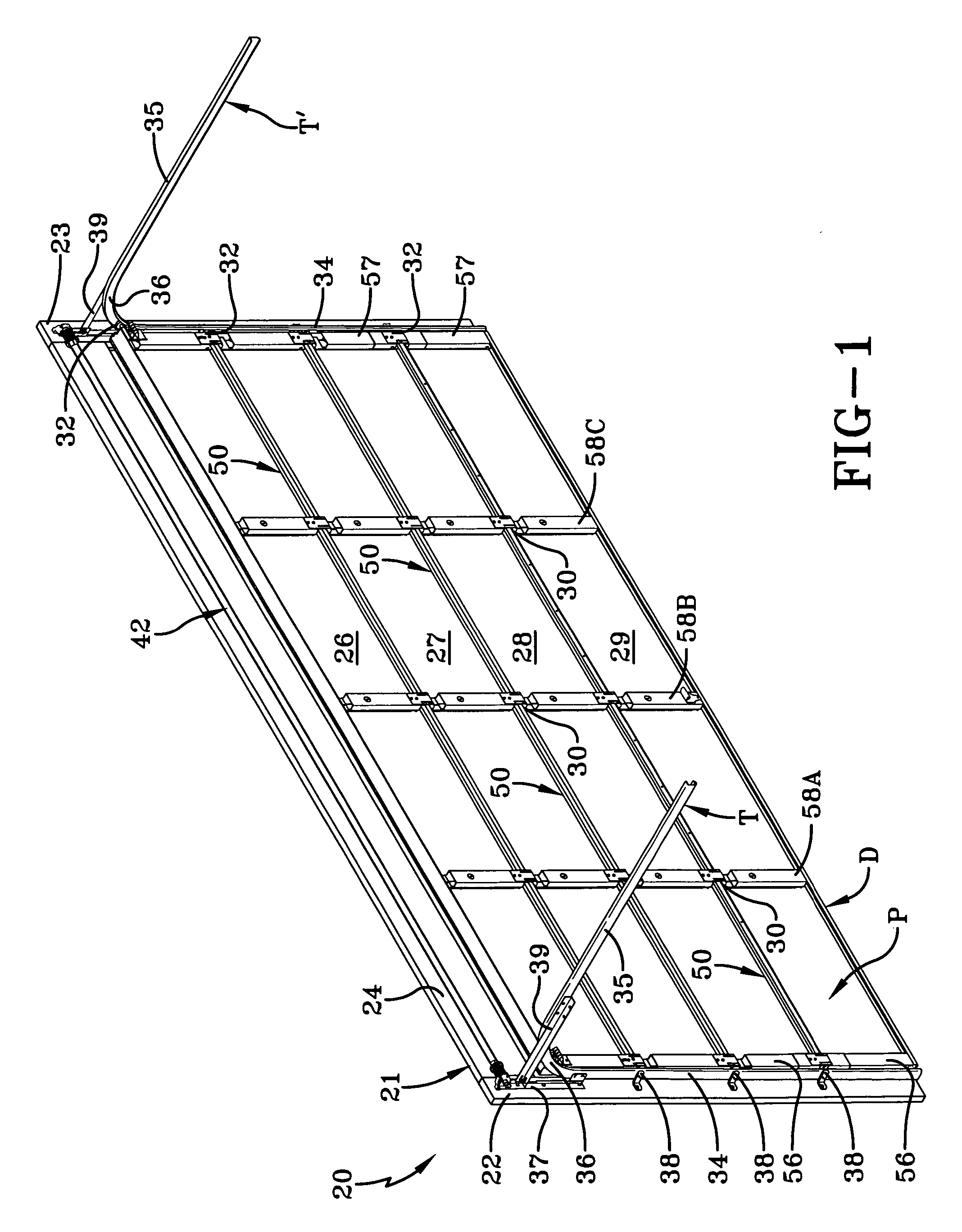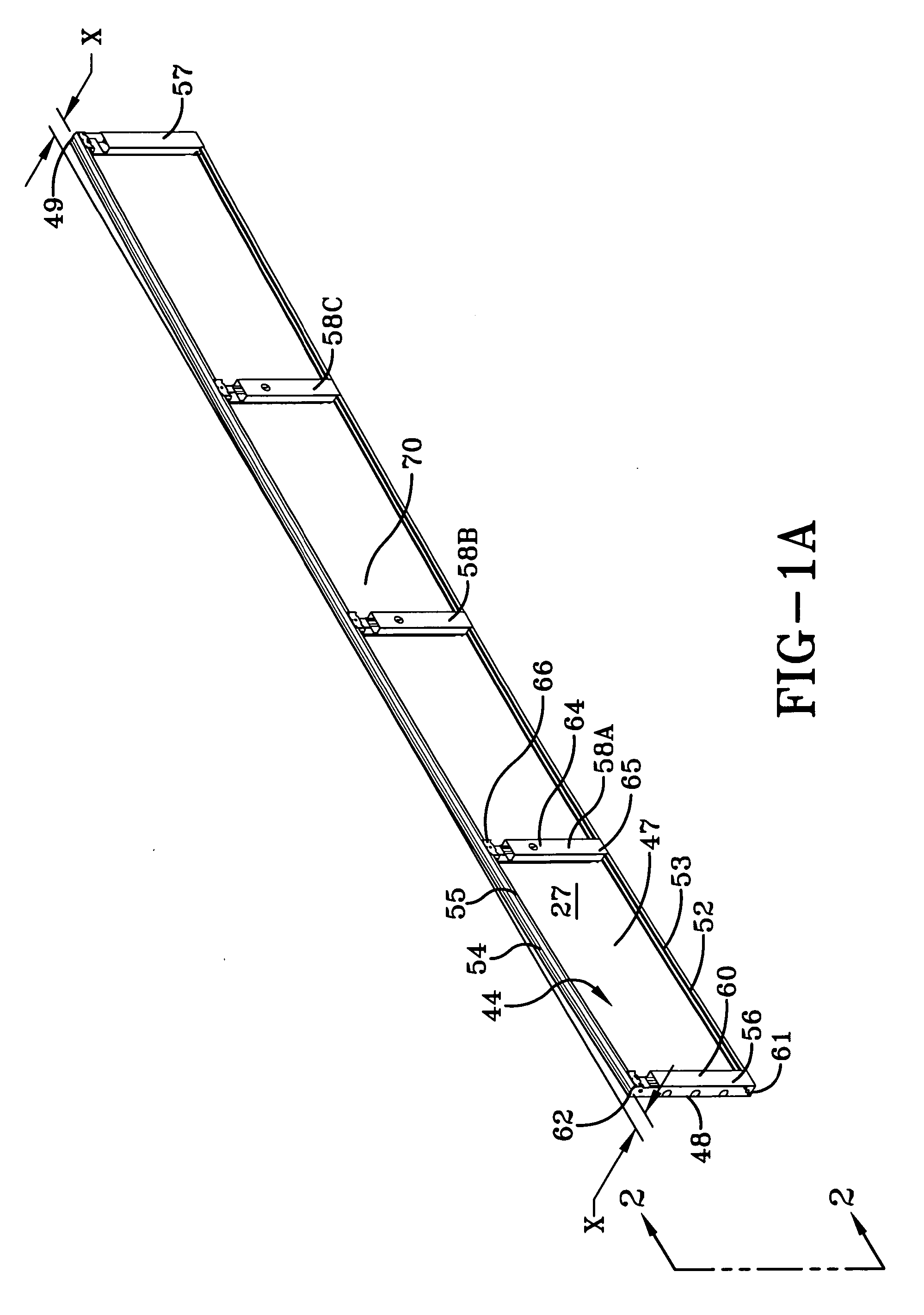Sectional door panel
a sectional door and panel technology, applied in the direction of door/window fittings, constructions, building components, etc., can solve the problems of deflection of panels, adversely affecting the efficient operation, and the proportion of panels, so as to prolong the service life of weather seals, prevent damage to weather seals, and effectively reinforce panels
- Summary
- Abstract
- Description
- Claims
- Application Information
AI Technical Summary
Benefits of technology
Problems solved by technology
Method used
Image
Examples
Embodiment Construction
[0015] The upward acting insulated or uninsulated sectional door system embodying the concepts present invention is generally indicated by the 20 in FIG. 1 of the accompanying drawings. The sectional door system 20 employs a sectional door, generally indicated at D, which is positioned for opening and closing movements relative to an opening defined by a frame, generally indicated by the numeral 21. The frame 21 includes a pair of spaced jambs 22 and 23 joined adjacent their vertical upper extremities by a header 24. The frame 21 delineates a generally inverted U-shaped reinforcement around the opening for door D. As persons skilled in the art will appreciate, the frame 21 is normally constructed of lumber for purposes of reinforcement, and to facilitate the attachment of elements supporting the sectional door D.
[0016] As seen in FIG. 1, the sectional door D includes a rectangular arrangement of panels, individually referred to by the character P. As shown, the panels P constitutin...
PUM
 Login to View More
Login to View More Abstract
Description
Claims
Application Information
 Login to View More
Login to View More - R&D
- Intellectual Property
- Life Sciences
- Materials
- Tech Scout
- Unparalleled Data Quality
- Higher Quality Content
- 60% Fewer Hallucinations
Browse by: Latest US Patents, China's latest patents, Technical Efficacy Thesaurus, Application Domain, Technology Topic, Popular Technical Reports.
© 2025 PatSnap. All rights reserved.Legal|Privacy policy|Modern Slavery Act Transparency Statement|Sitemap|About US| Contact US: help@patsnap.com



